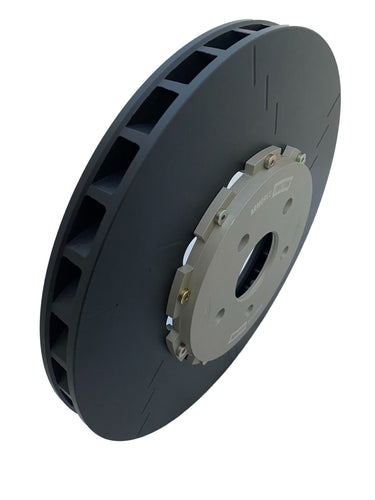-
Brakes ❯
❮ Brakes-
❮ Brake Adapters
-
❮ Brake Calipers
-
❮ Brake Cylinder Stops
-
❮ Brake Drums
-
❮ Brake Hardware
-
❮ Brake Kits
-
❮ Brake Line Kits
-
❮ Brake Master Cylinders
-
❮ Brake Pads
-
❮ Brake Rotors
-
❮ Brake Shoes
-
❮ Hand Brakes
-
-
❮ Drivetrain
-
❮ Axles & Components
-
❮ Clutch Components
-
❮ Differentials & Components
-
❮ Driveshafts & Loops
-
❮ Power Steering Lines & Pumps
-
❮ Ring & Pinion Components
-
❮ Transmissions
-
❮ Wheel Bearings & Hubs
-
-
Engine ❯
❮ Engine-
❮ Air Filters
-
❮ Air Intake Systems
-
Batteries, Starting & Charging
❮ Batteries, Starting & Charging -
❮ Camshafts & Components
-
❮ Connecting Rods & Push Rods
-
❮ Cooling
-
❮ Crankshafts & Components
-
❮ Engine Block
-
❮ Fuel Injectors
-
❮ Fuel Delivery
-
❮ Hardware
-
❮ Head Components
-
❮ Ignition
-
❮ Intake Manifold Components
-
❮ Oil
-
❮ Pistons
-
❮ Pulleys
-
❮ Timing Components
-
Throttle Bodies, Controllers & Spacers
❮ Throttle Bodies, Controllers & Spacers -
❮ Valves & Components
-
❮ Washer Tanks
-
❮ Wiring Connectors & Harnesses
-
-
Exhaust ❯
❮ Exhaust-
❮ Axle Back
-
Catalytic Converter Direct Fit
❮ Catalytic Converter Direct Fit -
❮ Catalytic Converter Universal
-
❮ Catback
-
❮ DPF Back
-
❮ Downpipe Back
-
❮ Downpipes
-
❮ Exhaust Components
-
❮ Header Back
-
❮ Headers & Manifolds
-
❮ Mid Pipes
-
Motorcycle Headers, Mufflers & Slip-On
❮ Motorcycle Headers, Mufflers & Slip-On -
❮ Mufflers & Resonators
-
❮ Powersports Exhausts
-
❮ Smoke Stacks
-
❮ Tail Pipes
-
❮ Tips
-
❮ Turbo Back
-
❮ Y Pipes
-
-
Exterior ❯
❮ Exterior-
❮ Body Armor & Protection
-
❮ Bumpers, Grilles & Guards
-
Car Care ❯
❮ Car Care -
❮ Deflectors & Louvers
-
❮ Exterior Styling
-
❮ Exterior Carbon Fiber
-
❮ Hoods & Components
-
❮ Horns & Accessories
-
❮ License Plates & Frames
-
❮ Nerf Bars & Running Boards
-
❮ Roof Racks & Truck Racks
-
❮ Roofs & Roof Accessories
-
❮ Stickers/Decals/Banners
-
❮ Tonneau Covers
-
❮ Truck Bed Accessories
-
❮ Winches & Hitches
-
-
❮ Forced Induction
-
❮ Blow Off Valve Accessories
-
❮ Blow Off Valves
-
❮ Blow-Down Kits
-
❮ Boost Controller Accessories
-
❮ Boost Controllers
-
❮ Forced Induction Components
-
❮ Intercooler Components
-
❮ Nitrous Components
-
❮ Reservoirs
-
❮ Solenoids
-
❮ Superchargers & Components
-
❮ Turbochargers & Components
-
❮ Wastegate Components
-
❮ Water Meth Components
-
-
Interior ❯
❮ Interior-
❮ Floor Mats
-
❮ Gauges & Pods
-
❮ Interior Accessories
-
❮ Interior Carbon Fiber
-
❮ Programmers & Chips
-
❮ Safety Apparel & Accessories
-
❮ Seats & Accessories
-
❮ Shifters & Components
-
❮ Steering Wheels & Hubs
-
❮ Window Nets & Net Straps
-
-
Lighting ❯
❮ Lighting-
❮ Brake Lights
-
❮ Bulbs
-
❮ Bumper Lights
-
❮ Daytime Running Lights
-
❮ Driving Lights
-
❮ Exterior Lighting
-
❮ Flashlights
-
❮ Fog Lights
-
❮ Headlights
-
❮ Interior Lighting
-
❮ Light Accessories and Wiring
-
❮ Light Bars & Cubes
-
❮ Light Covers and Guards
-
❮ Light Mounts
-
❮ Light Strip LED
-
❮ Light Tailgate Bar
-
❮ Lights Corner
-
❮ Replacement Bulbs
-
❮ Sidemarkers & Indicators
-
❮ Tail Lights
-
-
❮ Suspension
-
❮ Air Suspension Components
-
❮ Alignment Components
-
❮ Ball Joints
-
❮ Brake Cylinder Stops
-
❮ Bump Stops
-
❮ Bushings
-
❮ Chassis Bracing
-
❮ Coilovers & Components
-
❮ Electronic Lowering Systems
-
❮ Leaf Springs & Accessories
-
❮ Leveling Kits
-
❮ Lift Kits
-
❮ Lift Springs
-
❮ Lowering Kits
-
❮ Lowering Springs
-
❮ Panhard Bars
-
❮ Shackle Kits
-
❮ Shock & Spring Kits
-
❮ Shocks and Struts
-
❮ Spring Insulators
-
❮ Steering Dampers
-
❮ Steering Knuckles & Spindles
-
❮ Steering Racks
-
❮ Steering Stabilizers
-
❮ Strut Bars
-
❮ Subframes
-
❮ Suspension Arms & Components
-
❮ Suspension Controllers
-
❮ Suspension Packages
-
❮ Sway Bars & Bushings
-
❮ Tie Rods
-
❮ Torsion Bar Key
-
❮ Traction Bars
-
-
❮ Wheels & Tires
-
❮ Wheels
-
❮ Tires
-
❮ Hubcentric Rings
-
❮ Lug Nuts
-
❮ Tire Pressure Sensors
-
❮ Tire Tubes
-
❮ Valve Stems
-
❮ Wheel Accessories
-
❮ Wheel Bolts
-
❮ Wheel Center Caps
-
❮ Wheel Spacers & Adapters
-
❮ Wheel Studs
-
-
❮ Specials
-
Hybrid Electric Vehicle / EV Parts & Accessories ❯
❮ Hybrid Electric Vehicle / EV Parts & Accessories

